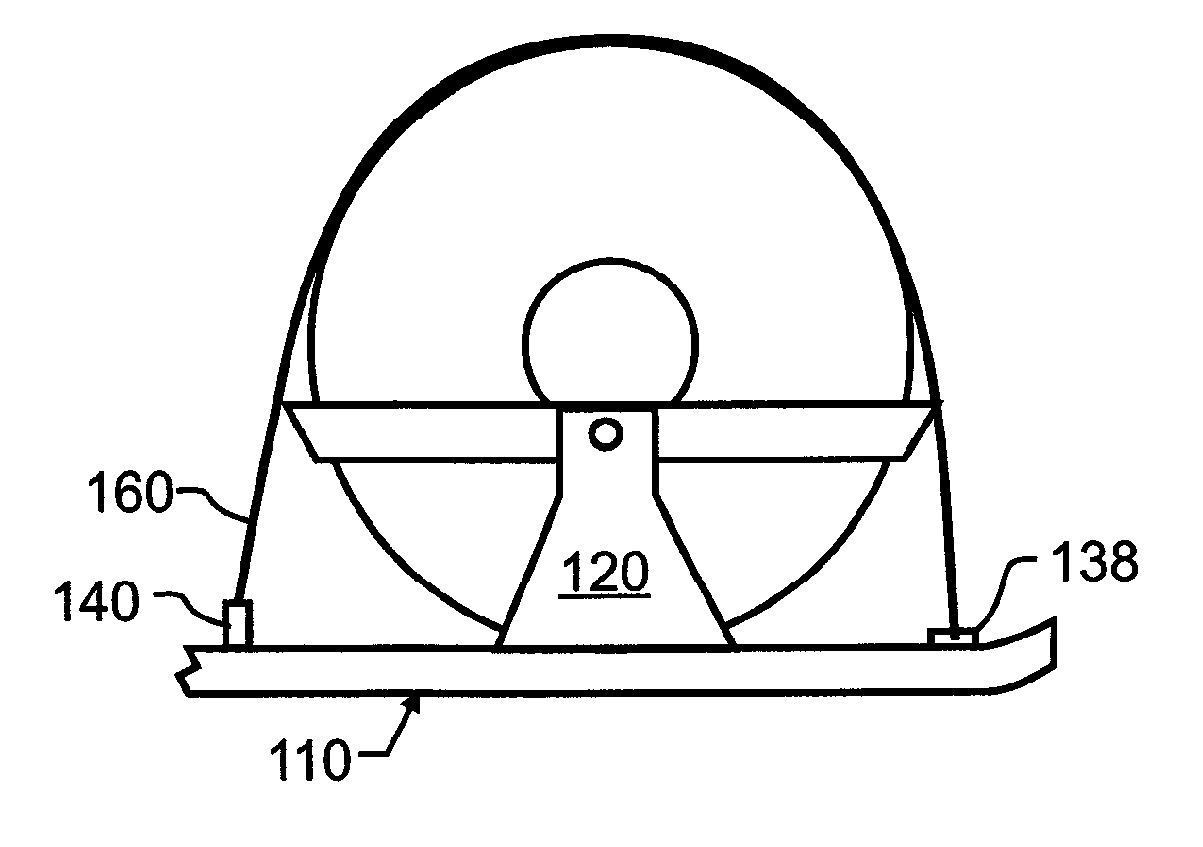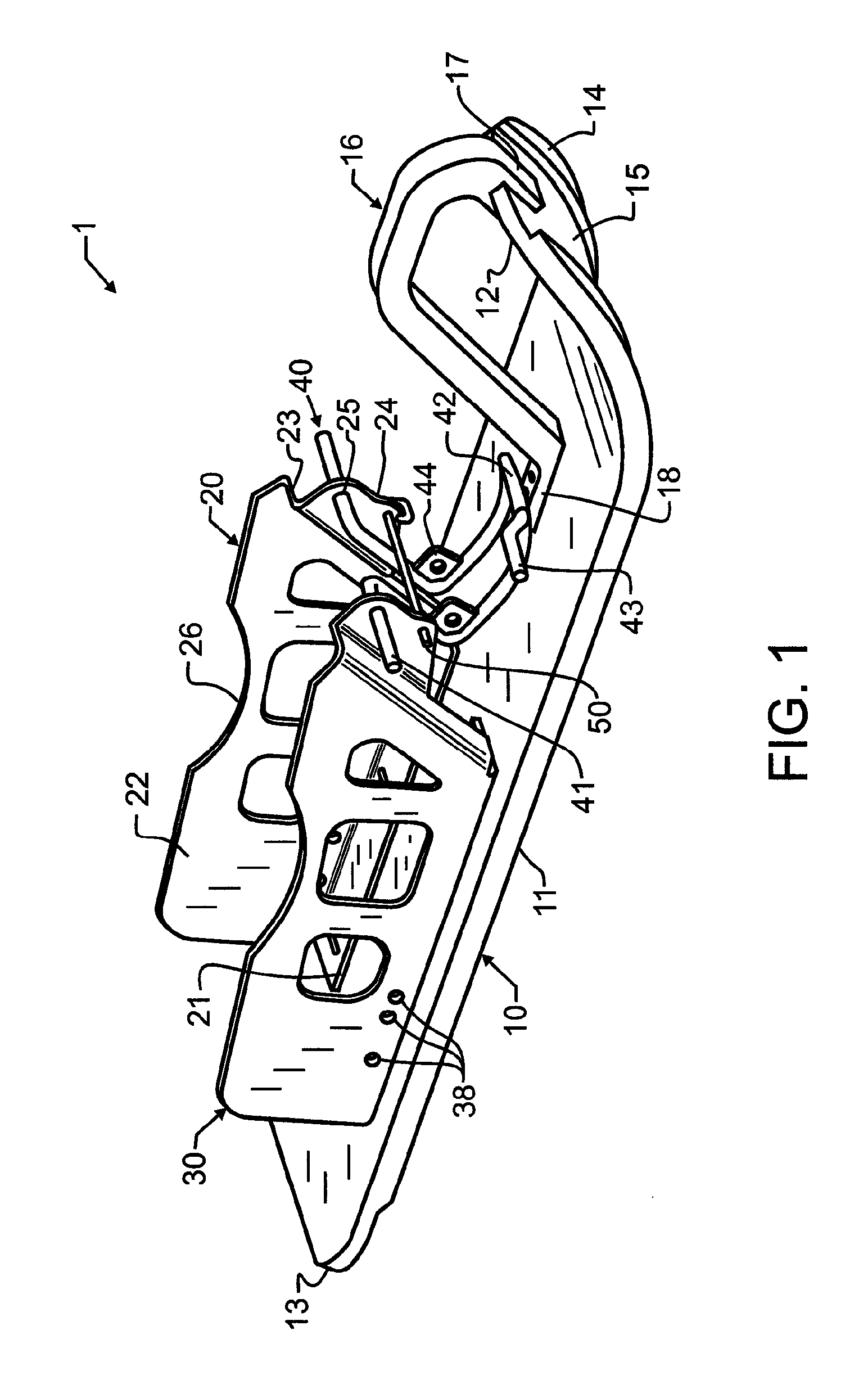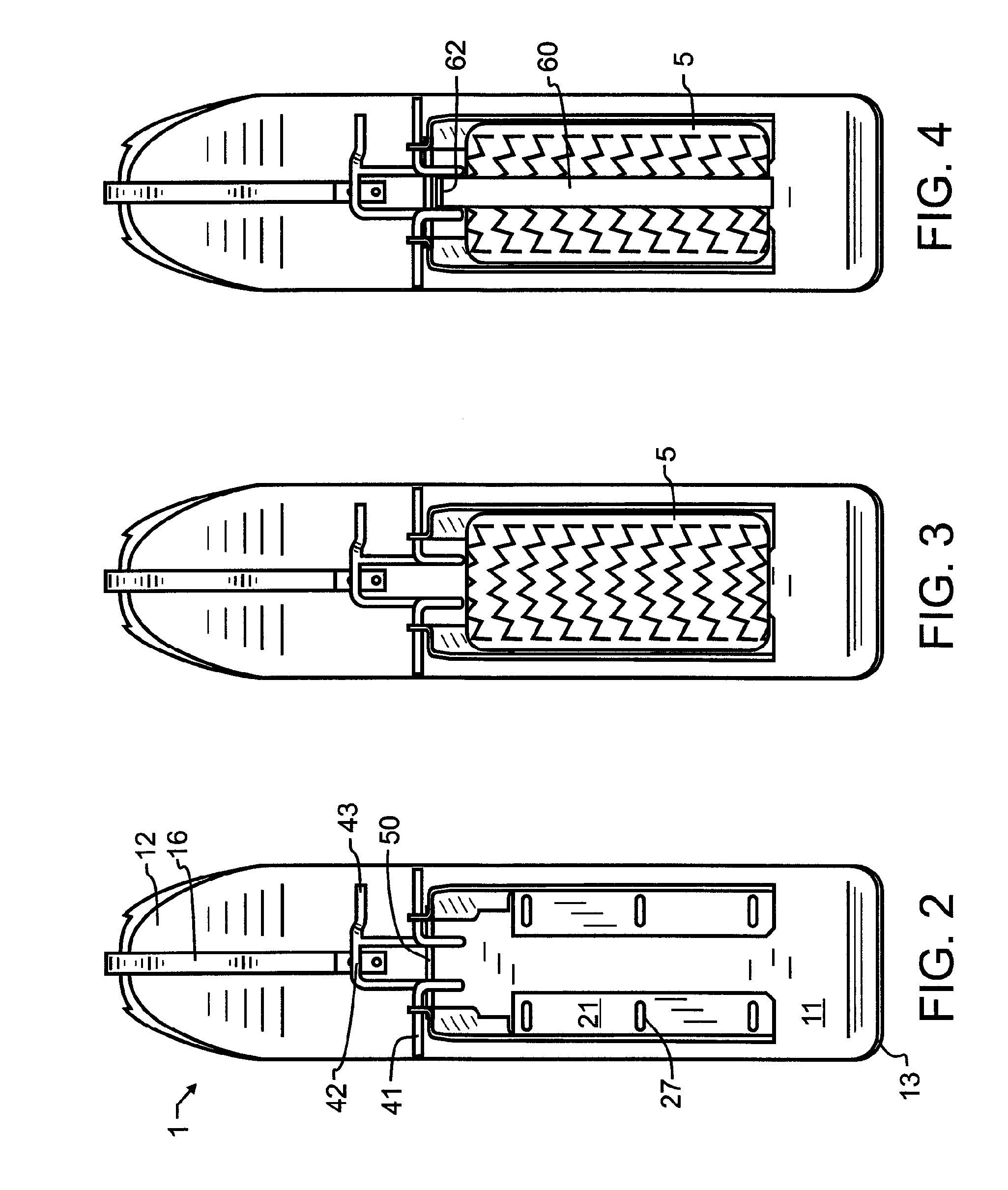In
spite of the many benefits derived from an ATV, they do have limitations.
While an ATV can pass through relatively shallower
snow depths, as the
snow deepens, the ATV will sink into the snow, and passage through the snow becomes sufficiently difficult that the ATV motor and transmission may be damaged.
Furthermore, tracks require more power to drive and operate, regardless of the surface, than tires that are operated on relatively smooth and level ground.
Consequently, even in the case of an all-
wheel drive ATV, the tracks require enough more power that an operator may accidentally
overwork the engine and transmission.
They also have the unfortunate limitation of disabling, and in most cases, completely removing the drive wheels.
This leaves the vehicle disabled except when there is sufficient snow, mud or other slippery surface for the runners to slide.
Furthermore, an operator must spend a substantial amount of time removing each tire and replacing it, time that further includes undesirable risks associated therewith.
These risks include potential damage to the tires, hubs, or the person doing the work.
As a result, only the most critical of applications will lead an owner or operator to carry out the work of switching away from tires, and, then once switched, the owner or operator will be quite reluctant to switch back.
This technology allows the operator to leave wheels attached to hubs, but is not without other limitations.
There are several limitations that carry throughout most of the prior art.
One limitation is the undesirable need to lift or jack the vehicle wheels up in order to install the skis As might be appreciated, jacking or otherwise lifting a vehicle always presents undesirable risk, requires significant time, and limits when and where the runners may be attached.
Another prior art limitation is the need to secure directly to a portion of the wheel inside of the outer circumference.
This can lead to unintended damage or deformation of the rim.
Yet another prevalent limitation is the need for tools to execute the attachment and removal of the runners.
Unfortunately, and depending upon the vehicle, travel speed, and surface being traversed, very large twisting forces or torque may be applied between the runner and tire.
The lack of additional structure enables undesirable movement between runner and tire, and can lead to dangerous separation therebetween.
However, the pocket has low wall height, in all likelihood to facilitate drive-on capability, but this low wall height also means that there is almost no effective wall support, meaning that this design is prone to limitations similar to Stryker and Bryant et al above, where the lack of sufficient additional wall structure enables undesirable twisting movement between runner and tire, and can lead to dangerous separation therebetween.
In other words, if the walls of Chase are elevated, then the vehicle will need to be lifted in, but if the walls are lower to permit drive-in
coupling, then there will not be sufficient support to prevent relative twisting between tire and runner.
This limits that concept to a particular wheel type and
diameter, and, since the securement tends to be localized to the single
fastener passing inside of the tire rim, in the event large forces are applied to the ski or runner, the forces will not be evenly distributed throughout the tire, and instead will be concentrated at the single
anchor point.
This can lead to unintended damage or deformation of the rim.
The Cartwright patent overcomes many of the aforementioned limitations, but does not clearly permit drive-on installation, and definitely requires the use of tools to enable the apparatus to be attached to a tire.
 Login to View More
Login to View More  Login to View More
Login to View More 


